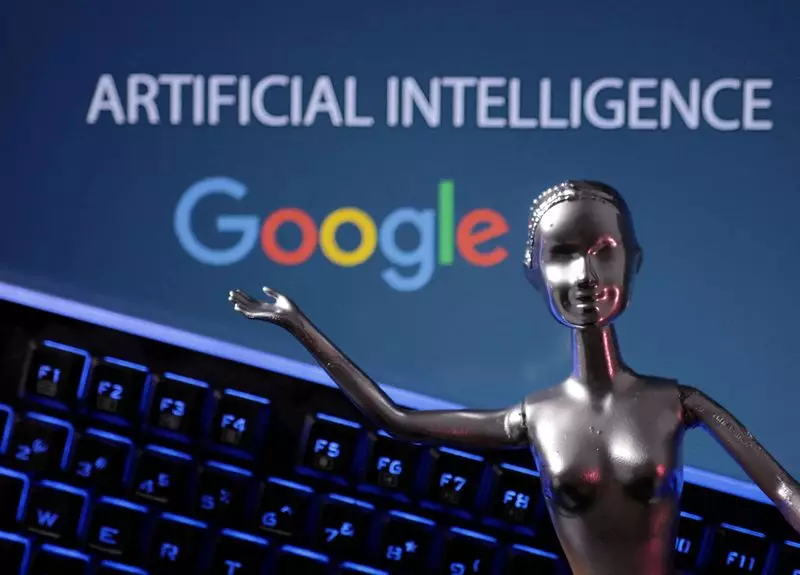In the age of rapid technological advancement, Alphabet Inc.’s Google finds itself at the nexus of innovation and regulation, particularly in the realm of artificial intelligence (AI). With increasing scrutiny from regulators worldwide, Google has been proactive in developing strategies to pave the way for a more favorable perception of AI technologies. As these technologies become woven into the fabric of various industries, understanding and complying with evolving regulatory frameworks will be crucial to both Google and its competitors.
One significant motivation behind this strategy is the need to counteract the wave of skepticism surrounding AI, which is often fueled by concerns over job displacement and privacy issues. As governments across the globe draft legislation aimed at curbing the unforeseen consequences of AI, including the European Union’s AI Act, tech giants are bracing themselves for potentially hefty penalties and stringent compliance requirements. As a leading force in this technology, Google aims to influence the narrative and mitigate the challenges posed by these regulations.
Google has recognized that fostering a deeper understanding of AI among the workforce is essential for both improving policy outcomes and ensuring its technologies are effectively integrated into everyday practices. To this end, the company has launched a series of educational programs aimed at equipping individuals and organizations with AI proficiency. Kent Walker, Alphabet’s president of global affairs, articulates this vision succinctly: a more informed populace will lead to better AI policy and innovative growth.
A flagship initiative, the Grow with Google program, demonstrates this commitment by offering a myriad of courses designed to develop technical skills like data analysis and IT support. With over a million individuals certified through this program already, Google has ambitiously expanded its curriculum to include specialized tracks focused on AI literacy, such as tailored training for educators. This multifaceted approach emphasizes the importance of creating pathways for employment in fields likely to be shaped by AI innovations.
Nonetheless, merely providing training is not sufficient, according to Walker. He stresses that participants need to have clear, tangible outcomes, such as certifications, to enhance their employability in a competitive job market. This focus on credentials signifies a deliberate effort to not just educate but also empower the workforce to navigate the impending transformations brought about by AI technologies.
Furthermore, Google is diversifying its initiatives by exploring public-private partnerships aimed at preparing the next generation of workers for careers in emerging sectors—most notably, those involving AI. A prime example of this collaborative effort is the “Skilled Trades and Readiness” program, which partners with community colleges to train individuals for potential roles in data center construction, with a strong emphasis on AI-related skills.
This model highlights a prudent investment in the future workforce, ensuring that educational content is aligned with market needs. As Walker elucidates, the government will likely assess various “proofs of concept” to identify successful initiatives worthy of support. Google’s involvement in this process positions the company not only as a leader in technology but also as a partner in shaping workforce development policies.
While the conversation surrounding AI often gravitates toward the fear of job elimination, both Google and industry experts maintain a more nuanced perspective. Studies commissioned by prominent institutions, including Google, suggest that while certain job categories may become obsolete, the majority of future jobs will entail some degree of interaction with AI technology. Hence, rather than obliterating job markets, AI is poised to transform them.
To anticipate these changes, Google has brought leading economist David Autor on board to study the potential impacts of AI on the workforce deeply. He forecasts an evolution of training methodologies, possibly incorporating immersive technologies akin to flight simulators to facilitate adult learning. This represents a significant evolution in the perception of retraining, which has traditionally been viewed with skepticism by adults hesitant to return to formal education settings.
Google’s efforts to navigate the intricate landscape of AI regulation, coupled with their commitment to education and workforce enhancement, reflect a strategic response to both opportunities and challenges presented by the transformative power of AI. By fostering a culture of collaboration through public-private initiatives and promoting educational programs that yield meaningful outcomes, Google aims to shape a future where both technology and the workforce can flourish in tandem. As the dialogue around AI continues to evolve, the role of industry giants like Google in influencing policy and public perception is more critical than ever.

